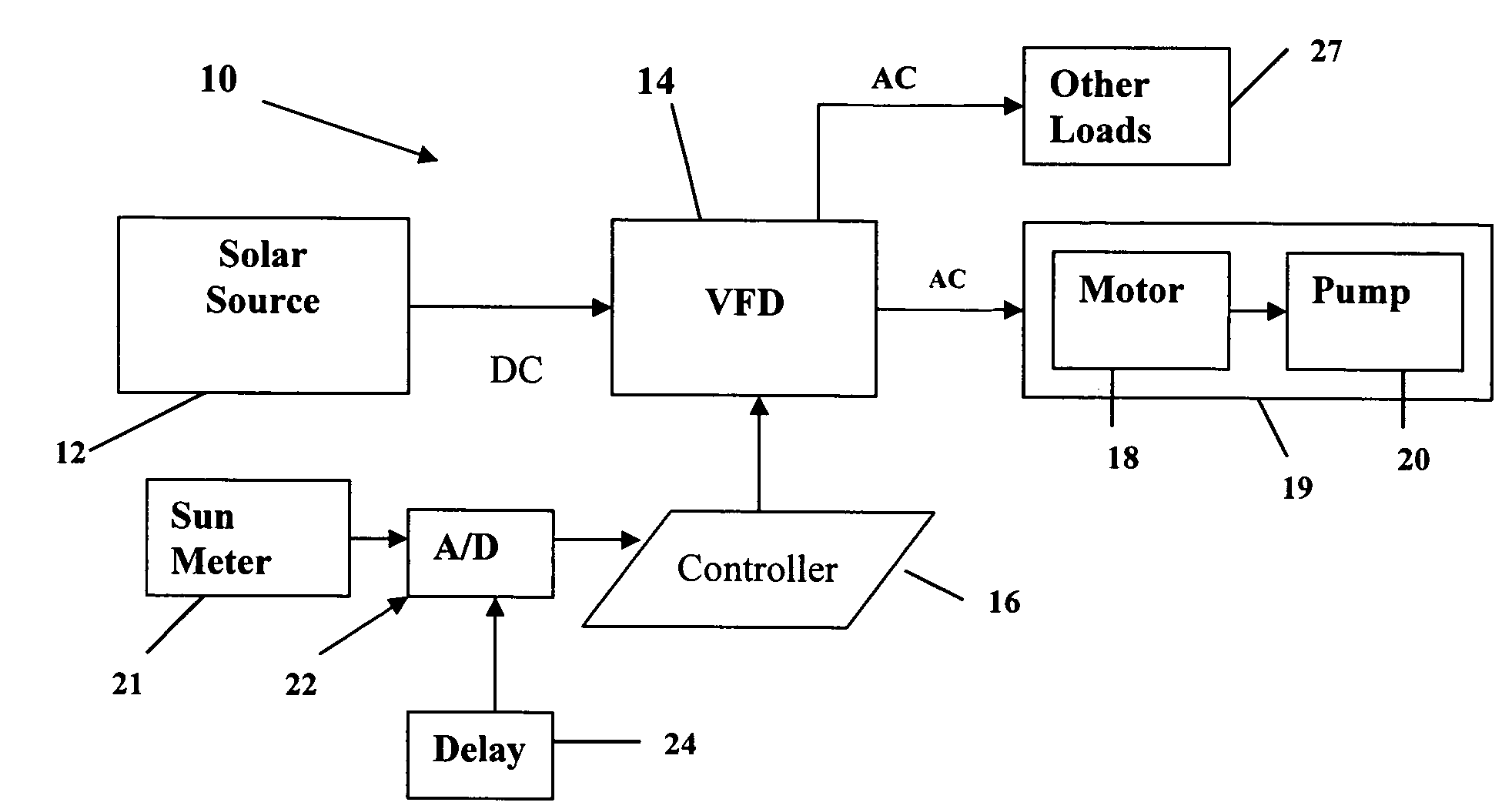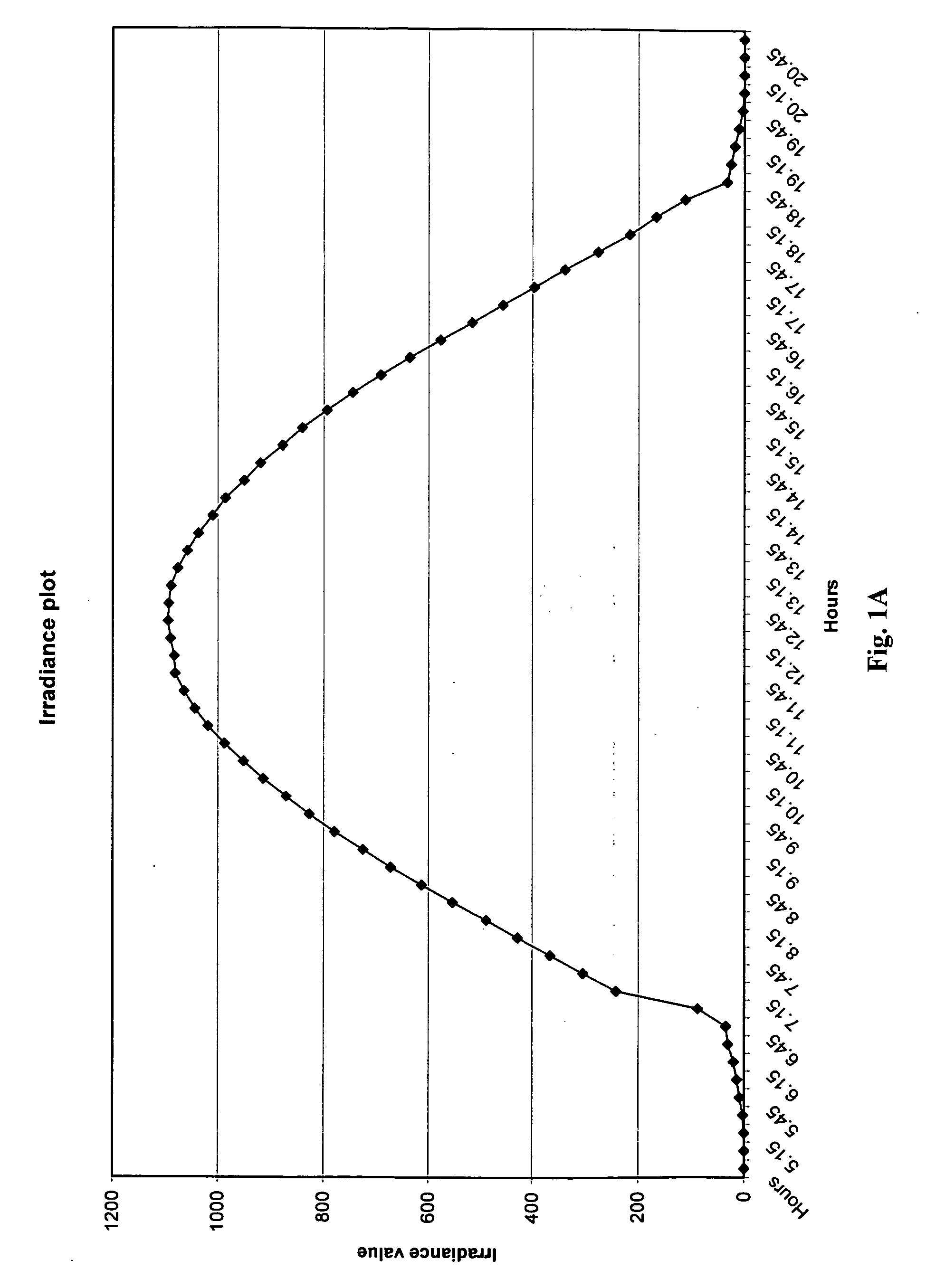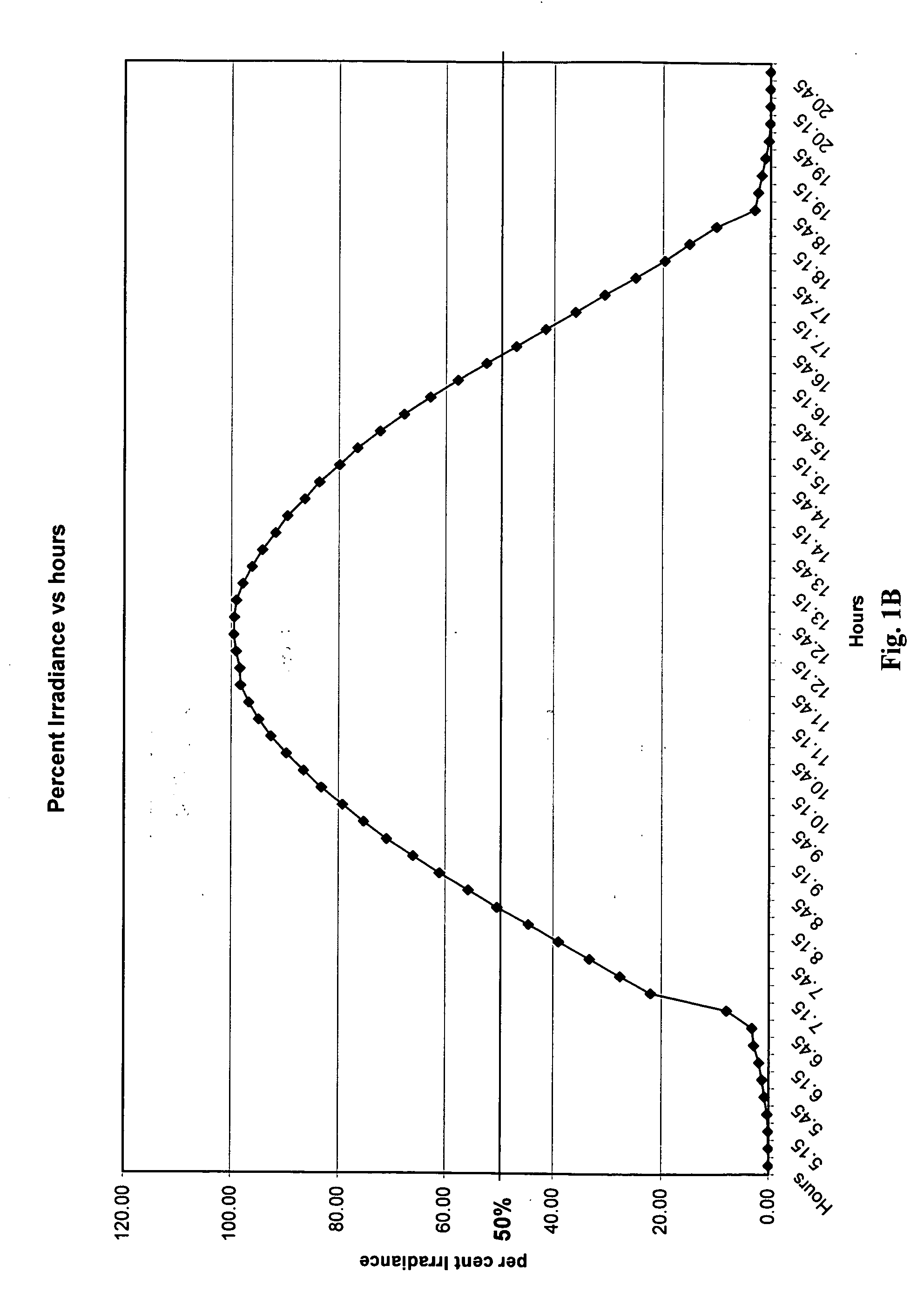Solar power control using irradiance
a solar array and solar energy technology, applied in the direction of solar thermal energy generation, control systems, electrical equipment, etc., can solve the problems of difficult detection of power, difficult to meet the power requirements of load, and difficulty in detecting when sufficient available power is being generated by solar arrays
- Summary
- Abstract
- Description
- Claims
- Application Information
AI Technical Summary
Benefits of technology
Problems solved by technology
Method used
Image
Examples
Embodiment Construction
[0034]In accordance with the invention, solar irradiance is measured and is used to determine solar array power and to control delivery of the solar generated power to a load. The solar irradiance measurement is used to control the power system, e.g. motor drive, to match available solar power to the load, e.g. motor. In the simplest embodiment of the invention, the solar irradiance measurement is used to determine whether to turn a motor on or off. In more complex embodiments, the solar irradiance measurement is used to change motor speed.
[0035]FIG. 1A is a plot of solar irradiance vs. time for daylight hours. The plot was made on a clear sunny day (idealized conditions). As shown, the plot starts gradually at daybreak, then increases rapidly until reaching a maximum of about 1095 W / m2 at about 12:30 pm, and then decreases until nightfall. Of course, the length of daylight hours will vary with location and time of year. FIG. 1B is a normalized irradiance plot that shows percentage ...
PUM
 Login to View More
Login to View More Abstract
Description
Claims
Application Information
 Login to View More
Login to View More - R&D
- Intellectual Property
- Life Sciences
- Materials
- Tech Scout
- Unparalleled Data Quality
- Higher Quality Content
- 60% Fewer Hallucinations
Browse by: Latest US Patents, China's latest patents, Technical Efficacy Thesaurus, Application Domain, Technology Topic, Popular Technical Reports.
© 2025 PatSnap. All rights reserved.Legal|Privacy policy|Modern Slavery Act Transparency Statement|Sitemap|About US| Contact US: help@patsnap.com



